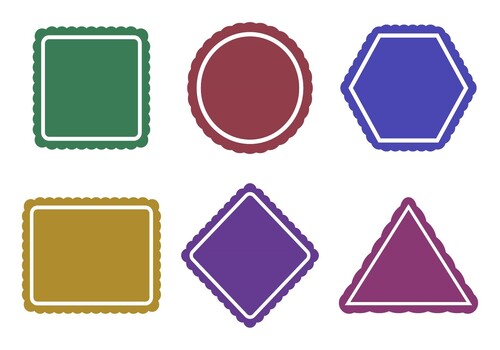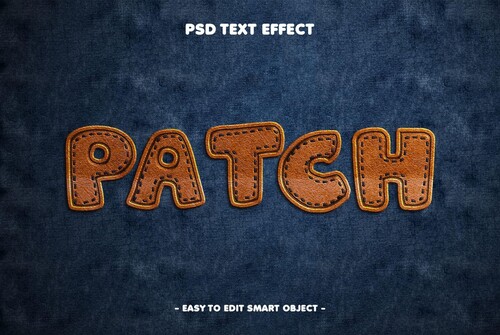4 Important Considerations When Choosing Custom Patch Shapes

What Role Do Uniform Patches Play in Professional Settings?
June 25, 2025
Chenille Patch Trends in 2025: Colors, Styles & Consumer Preferences
July 25, 2025Custom patches are small but powerful tools used to display identity, rank, affiliation, or branding. Unlike generic tags or labels, a patch communicates directly, given that the design, color, and shape are right.
These patches are widely used in industries like law enforcement, the military, corporate events, clubs, and sports teams. In each case, custom patch shapes play a big role in how they fit, feel, and communicate their message.
Custom patches are not only used for clothes or uniforms. In some groups, like scout clubs or fan communities, people also collect them. For example, special patches made for festivals, conventions, or big events often come in different shapes. This makes them look more interesting and feel more valuable. People keep these patches as souvenirs to remember the event. That’s why aligning the custom patch shapes with the intended use is important, so that they feel special and meaningful to the people who wear or collect them.
Why Do Custom Patch Shapes Matter?
One of the most important parts of patch creation is selecting the right custom patch shape. The patch shape plays a key role in how the design fits, looks, and functions. Different industries choose different patch shapes depending on placement, visibility, and purpose.
Some companies prefer standard patch shapes for consistency and lower costs, while others opt for custom outlines that reflect their brand identity.
The shape of a patch can change how people see it. A patch shaped like a star or badge is more eye-catching than a plain one. It stands out and leaves a stronger impression. Many people see these special shapes as higher quality, which helps a brand or group look more professional and memorable.
Here are some important factors to think about when selecting the perfect shape for your custom patch.
1. Purpose And Use
Before selecting the right patch shape, it’s important to define its purpose. Custom patches are often used to show team identity, affiliation, or recognition. Whether it’s for scouting groups, military units, police departments, or corporate teams, the design must reflect the function behind the patch.
For example, police departments commonly use police shoulder patch shapes to display authority and rank clearly on uniforms. In contrast, clubs and sports teams use patches on the front for unity and branding. Military and security personnel rely on patches to show division, mission roles, or service history.
The application of the patch also influences its shape and positioning. Patches can be placed on many things, such as hats, bags, workwear, etc. Hat patch shapes are compact and easily recognizable from a distance. However, patch pocket shapes ensure a neater fit without bulging.
Where you plan to use the patch can also help you pick the right shape. For outdoor gear like hiking bags or tactical uniforms, strong shapes like hexagons or chevrons look tough and last longer. For kids’ groups like scouts, fun shapes like stars or animals work well. They catch the eye and make the patch more exciting for children.
In short, the patch’s purpose and where it will be placed on the garment should guide your shape selection. This ensures the patch stays functional, looks sharp, and aligns with your overall goal. Iron-on patch shapes are perfect for casual or promotional wear, especially when you need patches that anyone can attach at home without stitching.
2. How Design Affects Patch Shape Choice

The design of a custom patch should reflect the identity and role of the wearer. That’s why aligning your patch’s look with your organization or occupation is essential. For example, military patch shapes and police patch shapes are often created in shield or badge formats to emphasize authority, structure, and tradition.
If you are designing for an army unit or tactical team, consider unit patch shapes that are bold and easily recognizable from a distance. Mission patch shapes are also common in defense, aviation, or space-related fields to commemorate specific tasks or assignments.
Meanwhile, brands or teams may go for more creative or flexible shapes. For example, sports teams or clubs may prefer custom patch shapes that are compact, bold, and fit well on curved surfaces. Scout clubs might opt for chenille blank patch shapes, such as a star, to identify scout accomplishments.
When you design a patch, think about what the shape means. A round patch can show unity or togetherness, so it works well for community groups. Sharp shapes like triangles or pentagons feel strong and active, which is why they fit sports teams or high-energy groups. Learning what shapes make people feel can help you create a patch that connects better with them.
Whatever the case, your design should match the tone of your organization. Keep it bold, functional, and relevant to ensure the patch communicates effectively.
3. The Right Size of the Custom Patch Shape
The size of a patch plays a major role in its visibility, placement, and visual impact. Larger patches offer more space for detailed graphics and complex logos. They are perfect when using standard patch shapes like circles, ovals, or rectangles, especially if your design includes text, icons, or layered elements.
Complex or multi-color designs work best with a larger patch format so none of the details get lost. These are great for back panels of jackets, shoulder areas of uniforms, or promotional tote bags. You’ll commonly see shoulder patch shapes in larger sizes for police, military, or rescue services where visibility is critical.
On the other hand, if your logo is clean and minimal, like a symbol or monogram, you can confidently choose a smaller size. Small patches work well with patch pocket shapes or even for accessories like keychains, caps, and shirt sleeves. Their simplicity makes them versatile without sacrificing clarity.
Choosing the right size depends on both your patch design and where you plan to use it. Bigger doesn’t always mean better. It has to be proportionate to your goal and garment.
4. Budget
The selected shape can directly affect the cost of your custom patch. The more complex the outline, the more time and resources it takes to produce, especially when ordering in large quantities. For example, custom team patch shapes with intricate curves or pointed edges are often more expensive to cut than standard patch shapes like circles or rectangles.
If your patch design includes borders, layered shapes, or non-symmetrical outlines, expect higher setup charges and production time. This cost multiplies in bulk orders. On the other hand, blank patch shapes or common patch shapes that feature a single thread color and a clean silhouette are easier and more affordable to produce, even when ordering in hundreds.
To stay within budget, keep your design simple, especially for team uniforms, school clubs, or branded merch. This strategy helps you get high-quality results without breaking the bank.
Final Word
Choosing the right custom patch shapes is more than a design decision. It’s about how you can make your message visible, memorable, and impactful. Therefore, every detail matters, such as the purpose of your patch, size, color, and budget. Whether you’re creating patches for sports teams, businesses, or events, the shape you choose will affect not just aesthetics, but also cost and usability.
Looking for high-quality patches that stand out? At Anything Chenille, we specialize in custom chenille patches in a wide range of shapes, colors, and finishes. From varsity jackets to custom apparel, our iron-on patches are crafted for durability and designed to leave a lasting impression. Browse our collection today and bring your vision to life with the perfect patch.





